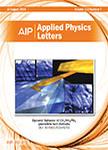版权所有:内蒙古大学图书馆 技术提供:维普资讯• 智图
内蒙古自治区呼和浩特市赛罕区大学西街235号 邮编: 010021

作者机构:Zhejiang Univ Ocean Coll Zhoushan 316021 Peoples R China Hangzhou Dalu Ind Co Ltd Hangzhou 311227 Zhejiang Peoples R China Zhejiang Univ Ocean Res Ctr Zhoushan Zhoushan 316021 Peoples R China Tonglu MOULD Machinery Mfg Co Ltd Hangzhou 310027 Peoples R China
出 版 物:《PHYSICS OF FLUIDS》 (Phys. Fluids)
年 卷 期:2024年第36卷第10期
核心收录:
学科分类:080704[工学-流体机械及工程] 080103[工学-流体力学] 08[工学] 0807[工学-动力工程及工程热物理] 0702[理学-物理学] 0801[工学-力学(可授工学、理学学位)]
基 金:National Natural Science Foundation of China10.13039/501100001809 [U23B20107, 52076186] National Natural Science Foundation of China State Key Laboratory of Maritime Technology and Safety Advanced Space Propulsion Laboratory of BICE [LabASP-2023-04] Beijing Engineering Research Center of Efficient and Green Aerospace Propulsion Technology
主 题:Damping
摘 要:In the actual marine environment, the hydrodynamic characteristics of floating counter-rotating tidal turbines (FCRTTs) are influenced by the motion responses of their carrier platforms. Therefore, accurately analyzing and predicting hydrodynamic loads under the motions of FCRTTs are crucial. In this paper, a fitting formula for hydrodynamic loads of FCRTTs applicable to rotational motion is derived. Then, the effects of surge amplitude, surge frequency, and tip speed ratio on the hydrodynamic loads of an FCRTT are also calculated. It is found that the instantaneous load fluctuation of the rear rotor is more severe than that of the front rotor. However, the average torque of both rotors is similar, which can effectively enhance the operational stability of the FCRTT. Additionally, the hydrodynamic loads are decomposed into average hydrodynamic force, damping force, and added mass force based on the least squares method. A fitting formula for the hydrodynamic loads applicable to different surge conditions is derived, incorporating 11 hydrodynamic coefficients. The results indicate that the damping coefficients n(P)(0) and n(T)(0) play a dominant role in the fluctuation amplitude of the hydrodynamic loads. Finally, an effective and fast prediction model for various hydrodynamic coefficients is successfully established using the three-dimensional radial basis function. The relative errors between the predicted peak values of all performance coefficients and the values calculated using the computational fluid dynamics (CFD) method are within -3.5%. This paper provides important guidance for engineering design and load prediction of FCRTTs. Moreover, the predictive methodology can be extended for application to other single-degree-of-freedom and couple motions.